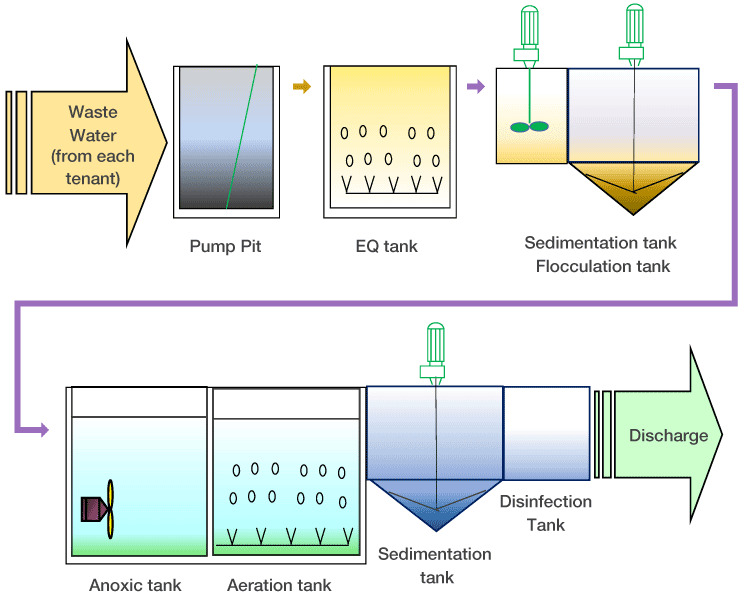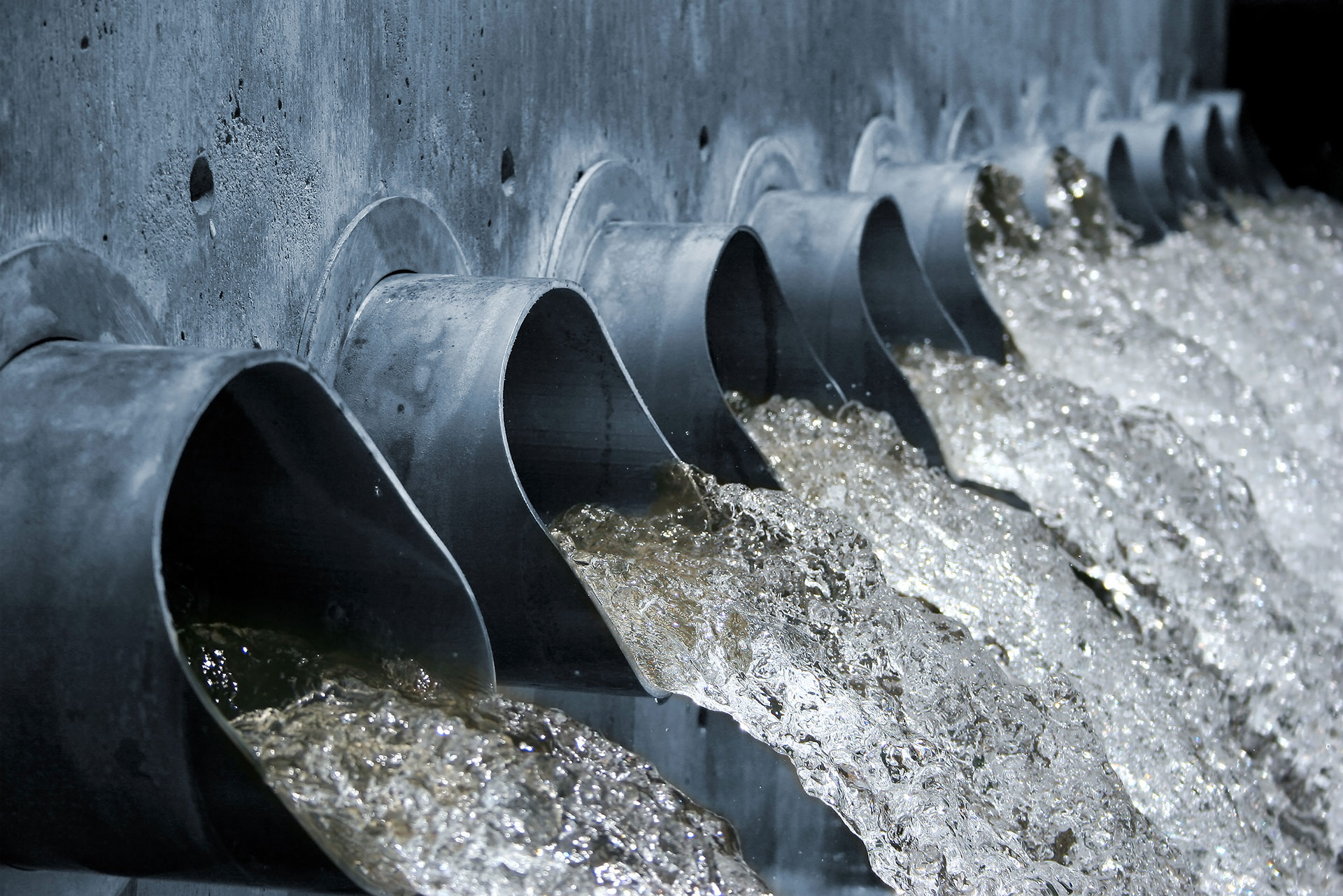Industrial Waste Water Treatment-- Tailored Solutions for Effective Wastewater Treatment
Industrial Waste Water Treatment-- Tailored Solutions for Effective Wastewater Treatment
Blog Article
Secret Strategies in Hazardous Waste Water Treatment Processes
The therapy of commercial wastewater is an important element of ecological monitoring, involving a range of methods created to minimize the influence of impurities. Innovations in innovations such as membrane filtering and advanced oxidation procedures use innovative options for enhancing therapy efficiency.
Physical Therapy Approaches
Just how effectively can physical treatment methods address the complexities of commercial wastewater? Physical therapy approaches play a crucial duty in the initial phases of wastewater administration, focusing mainly on the removal of solids and large particulates. Strategies such as filtering, sedimentation, and flotation are crucial for lowering the focus of suspended solids, thereby enhancing the performance of succeeding treatment processes.
Sedimentation involves the gravitational settling of solids, permitting for the separation of heavier products from the wastewater. This technique is specifically reliable in clarifying water prior to chemical or biological therapies.
Additionally, flotation protection methods, which use air bubbles to lift suspended solids to the surface area for removal, are reliable in treating wastewater with high focus of fats, oils, and greases. Generally, physical therapy techniques act as a vital primary step in the extensive monitoring of industrial wastewater, making sure that the lots on subsequent treatment phases is minimized and improving general therapy efficacy.
Chemical Treatment Methods
While physical treatment methods lay the foundation for effective wastewater monitoring, chemical treatment strategies are crucial for attending to the more intricate contaminants usually discovered in industrial effluents. These techniques utilize numerous chemical agents to speed up, neutralize, or oxidize unsafe compounds, making certain a much more thorough removal of toxins.
One common approach is coagulation and flocculation, where chemical coagulants such as aluminum sulfate or ferric chloride are contributed to advertise the aggregation of suspended fragments. This process enhances solid-liquid splitting up, lowering turbidity and enhancing water high quality. Additionally, neutralization processes are employed to change the pH of wastewater, using bases or acids to reduce the effects of acidic or alkaline streams, specifically.
Oxidation-reduction reactions play a crucial duty in derogatory organic pollutants and pathogens. Chemical oxidants like ozone, chlorine, or hydrogen peroxide are utilized to damage down intricate organic substances, making them much less damaging or more naturally degradable. In addition, progressed oxidation processes (AOPs) incorporate multiple oxidation techniques to boost toxin elimination efficiency.
Biological Therapy Processes
The performance of wastewater treatment is significantly improved by organic treatment processes, which harness the all-natural metabolic activities of bacteria to decompose raw material and eliminate pollutants. Industrial Waste Water Treatment. These procedures primarily involve anaerobic and aerobic food digestion, each tailored for particular types of wastewater
Cardio treatment procedures make use of oxygen to support microbial growth, advertising the failure of organic toxins into co2 and water. Common methods include turned on sludge systems, where aeration storage tanks facilitate the mixing of wastewater with microorganisms, and flowing filters, which urge biofilm advancement on media surface areas.
Alternatively, anaerobic therapy procedures take place in the lack of oxygen, making use of anaerobic microorganisms to disintegrate organic issue, resulting in biogas manufacturing, a renewable resource source. Anaerobic digesters are often utilized in industrial settings for this objective, properly lowering the volume of sludge while creating beneficial biogas.
The option of a biological treatment technique depends on wastewater features, therapy goals, and governing standards. The assimilation of organic procedures in wastewater therapy not just boosts pollutant removal performance but additionally promotes sustainability by lessening chemical use and sustaining resource recuperation.
Advanced Oxidation Processes

Usual AOP strategies include Fenton's photocatalysis, ozonation, and reagent. Fenton's reagent, a mix of hydrogen peroxide and ferrous iron, militarizes the development of hydroxyl radicals, making it efficient for treating wastewater containing phenolic compounds and other recalcitrant substances.
AOPs provide numerous benefits, Click Here consisting of decreased sludge production and the capacity to deal with wastewater with high concentrations of natural pollutants. The execution of AOPs requires cautious consideration of functional criteria and cost-effectiveness, guaranteeing that these advanced methods are suitably integrated right into existing wastewater therapy systems.
Membrane Layer Purification Technologies

Microfiltration works for eliminating put on hold solids and bacteria, while ultrafiltration targets smaller organic particles and infections. Nanofiltration links the space in between ultrafiltration and reverse osmosis, properly eliminating divalent ions and organic compounds. Reverse osmosis supplies the highest degree of filtration, utilized mostly for desalination and eliminating mono-valent ions.
Membrane layer modern technologies supply many benefits, consisting special info of reduced energy usage compared to traditional treatment techniques, modular style for scalability, and the potential for water recuperation and reuse. Nonetheless, challenges such as membrane layer fouling and the demand for routine maintenance need to be resolved to ensure system efficiency. On the whole, membrane purification technologies represent an essential component of contemporary industrial wastewater therapy techniques, promoting sustainability and source conservation in water management.
Verdict
In verdict, industrial wastewater therapy uses a varied array of methods, including physical, chemical, organic, and advanced methods. Continued developments in these approaches will certainly better boost the performance and effectiveness of wastewater treatment procedures in commercial settings.
The therapy of industrial wastewater is a vital aspect of ecological monitoring, including an array of methods made to alleviate the influence of pollutants.Exactly how properly can physical treatment approaches address the intricacies of industrial wastewater?Advanced oxidation procedures (AOPs) stand for an innovative strategy in commercial wastewater treatment, made to properly break down natural pollutants that are usually resistant to conventional therapy methods (Industrial Waste Water Treatment).In verdict, industrial wastewater therapy uses a varied variety of techniques, consisting of physical, chemical, biological, and progressed methods. Continued advancements in these techniques will certainly even more improve the performance and performance of wastewater therapy procedures in industrial settings
Report this page